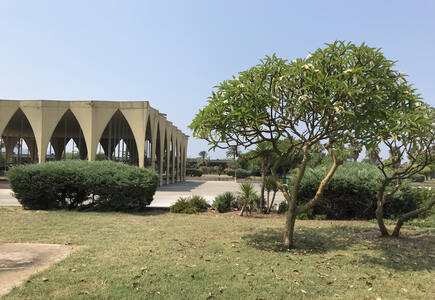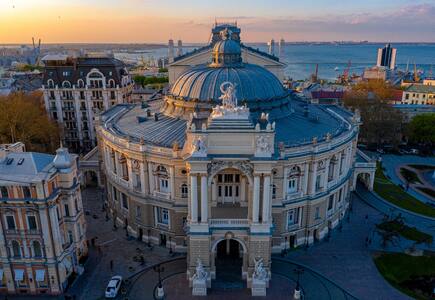New Inscribed Properties
Cultural properties
Landmarks of the Ancient Kingdom of Saba, Marib
The Landmarks of the Ancient Kingdom of Saba, Marib, is a serial property comprising seven archaeological sites that bear witness to the rich Kingdom of Saba and its architectural, aesthetic and technological achievements from the 1st millennium BCE to the arrival of Islam around 630 CE. They bear witness to the complex centralized administration of the Kingdom when it controlled much of the incense route across the Arabian Peninsula, playing a key role in the wider network of cultural exchange fostered by trade with the Mediterranean and East Africa. Located in a semi-arid landscape of valleys, mountains and deserts, the property encompasses the remains of large urban settlements with monumental temples, ramparts and other buildings. The irrigation system of ancient Ma'rib reflects technological prowess in hydrological engineering and agriculture on a scale unparalleled in ancient South Arabia, resulting in the creation of the largest ancient man-made oasis.
Rachid Karami International Fair-Tripoli
Located in northern Lebanon, the Rachid Karameh International Fair of Tripoli was designed in 1962 by the Brazilian architect Oscar Niemeyer on a 70-hectare site located between the historic centre of Tripoli and the Al Mina port. The main building of the fair consists of a huge covered hall in the shape of a boomerang of 750 metres by 70 metres, a flexible space for countries to install exhibitions. The fair was the flagship project of Lebanon's modernization policy in the 1960s. The close collaboration between Oscar Niemeyer, the architect of the project, and Lebanese engineers gave rise to a remarkable example of exchange between different continents. In terms of scale and wealth of formal expression, it is one of the major representative works of 20th century modern architecture in the Arab Near East.
The Historic Centre of Odesa
The Historic Center of Odesa, part of the Black Sea port city founded in 1794 on the site of Khadzhybei, is a densely built area characterized by two- to four-storey buildings and wide perpendicular streets lined with trees that bear witness to the city’s rapid growth until the early 20th century. The site includes theatres, religious buildings, schools, private palaces and tenement houses, clubs, hotels, banks, shopping centres, warehouses, stock exchanges, terminals and other public and administrative buildings designed by architects and engineers, mostly from Italy in the early years, but also of other nationalities. Eclecticism is the dominant feature of the historic city centre’s architecture. The site bears witness to the city’s highly diverse ethnic and religious communities, representing an outstanding example of intercultural exchanges and the growth of multicultural and multi-ethnic Eastern European cities of the 19th century.
Views
World Heritage List statistics




































